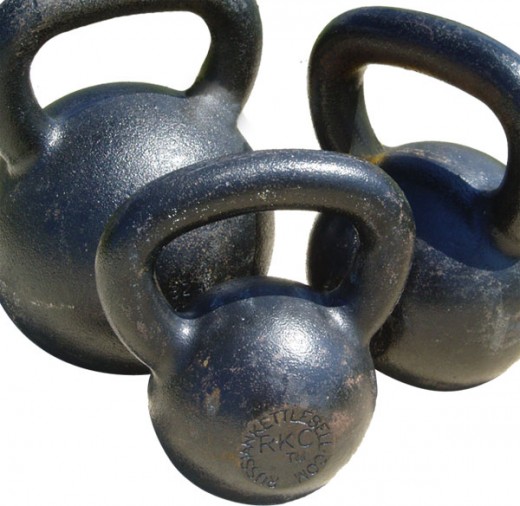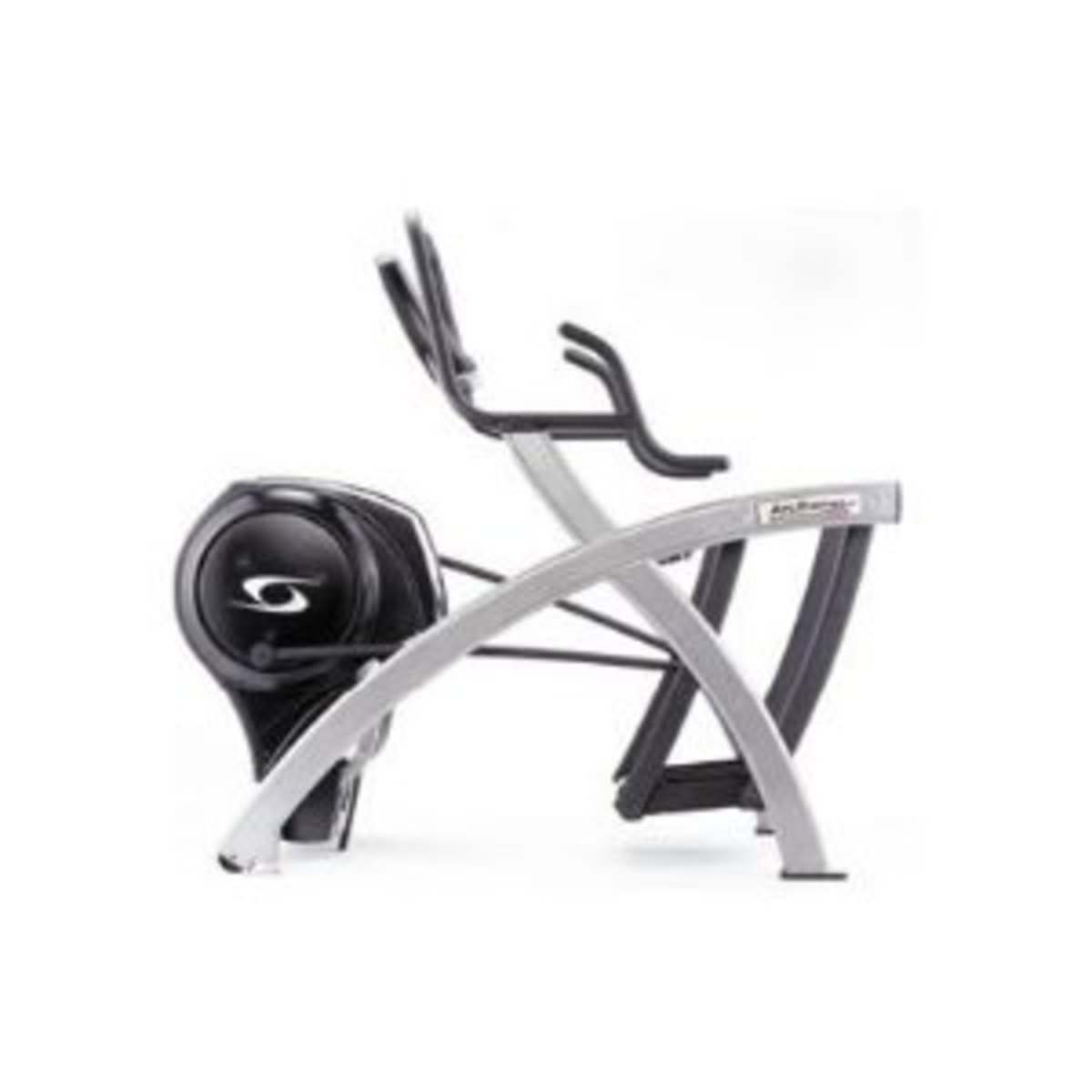Kettle Bell: What You Need to Know

The Basics
The kettle bell is one of the most dynamic, functional, convenient, and cost-effective pieces of exercise equipment a person can own. It is unlike any other weight or dumbbell on the market because of its distinctly contoured handle and unique distribution of mass. This gives it the ability to be useful in an enormously wide range of exercise activities. It can be used for both simple and complex movement patterns that have the ability to target every component of the musculoskeletal system. It is most commonly used for functional movement and ballistics training, but its relevance to many other types of workouts makes it a very versatile piece of equipment. Of course, just like with any form of exercise, it is not appropriate for everyone. I plan to give you both the good and the bad associated with kettle bell exercise so you can be an empowered consumer, able to make an educated decision about what is best for you.

A Brief History
The kettle bell first arose on the scene in Russia nearly 300 years ago, being used less as an exercise tool and more as a standard weight measure for bartering purposes. Its use was later generalized into strength training for power lifters, and kettle bell lifting eventually became the national sport of the Soviet Union in 1948. It has since extended to the States, especially growing in popularity by the late 20th century as an alternative to previously mainstream fitness equipment. Its arrival to American soil has impacted our exercise philosophy in a tremendous way. Let’s take a look at why, and see how you might be able to use it to improve your quality of life.

What's So Great About the Kettle Bell?
1) Versatility: A kettle bell routine can be successfully integrated into almost anyone’s daily activities, regardless of their age, goals, or level of function. That is, the same weight that an elderly nursing home resident uses to improve balance in standing can be effective at improving cardiovascular endurance for a high-level athlete. There are many components to physical performance that often go overlooked in exercise routines. Unfortunately, the average exerciser begins a quick fitness program without any clear objectives or rationale for their exact course of action. They may have a general idea of what they want to accomplish, but their activities are misguided and their goals unspecified. This leads to a lack of adherence and, ultimately, an unsuccessful attempt at improving their quality of life. In order to fully appreciate the value of a kettle bell, it is important to understand how using it in exercise can help people achieve a variety of goals. Do you want to lose weight? Look better? Feel better? Improve sport-specific skills? Strength? Power? Coordination? Balance? The list goes on.
2) Functionality: Strength by itself is useless. What do I mean by that? In order to be functional, or useful/important, strength must be accompanied with movement in diagonal planes, which is what we use to move every day. These planes of movement are sometimes hard to come by when using typical weightlifting techniques, but not with a kettle bell. It's not a machine, so you are free to move in whatever ranges you have available. Because of its unique grip and shape, it is able to provide adequate challenge to the user as he/she takes it through various movement directions.
The ability of the human body to adapt to the mechanical stresses placed on it is incredible. However, it cannot adapt to stresses it does not experience. This means that if I only work on bench press, I will only improve strength in the range of movement I experience when bench pressing because the muscle fibers are selectively recruited. Unless you are a professional powerlifter, your primary goal is likely not to improve your bench press performance. It may be a component of getting you where you want to go, but it is not the ultimate goal. Most people say they just want to get “stronger,” but don’t really understand what they mean when they say that. When it gets down to it, what they are really referring to is functional strength, which is what the kettle bell targets. They want to operate at an optimal level of health/function, performing their activities better and without pain, being able to use their strength for whatever purposes in life that are important to them. And looking good in the process doesn’t hurt either!
3) Simplicity: Not only is the design of the kettle bell itself simple, but the movements of the exercises can be broken down into simple, yet enormously effective, patterns. In fact, the effectiveness of the workouts adds to the simplicity and convenience of this product. For example, significant aerobic benefits can be experienced in a short amount of time, without needing to go to a gym or pay thousands of dollars to access bulky equipment. As if that did not make it simple enough, the kettle bell is also very easy to store, and there is zero set-up required. It can be used virtually anywhere at any time. There is no other piece of exercise equipment that boasts such a wide array of uses that is also so portable and simply designed.

What's NOT So Great About the Kettle Bell?
1) Risk of Injury: The use of momentum and quick, explosive movements is a common theme among kettle bell exercises. Because of the ballistic nature of these movements, there is inherent risk associated with them. This is why learning proper technique for a particular movement is absolutely essential (see #2 below). Proper training really should be sought out before trying any new movement. Especially anyone with acute or chronic back, hip, knee, or shoulder pain should avoid this type of exercise. Any conditions that relate to decreased bone or soft tissue integrity are also red flags. If there is ever any doubt, please consult your physician.
2) Technique Required: A kettle bell is not just another weight you can pick up and get right to work with. It is a wonderful tool, but it must be handled appropriately for the user to experience maximum benefits and safety. Technique components may include instructions such as how and where to bear weight, how to pick it up and set it down, how far to swing it, and how to control your breathing pattern throughout the movement. The most basic, low-level exercises do not require extensive training to learn, but are important to master before moving on to higher-level activities. In order to tackle these more complex movement progressions, you should consult higher training than just videos online. There are websites available to help you find a certified instructor near you that can take you through the next steps if you so desire.
3) Unorthodox: People who are unfamiliar with weight training or exercise in general may find the unorthodox nature of kettle bell exercise to be unappealing. Users may stick out like a sore thumb if spotted in the gym, or tossing it around. Also, these different movements may also result in different areas of muscle soreness, so that will be something to look out for as well.
Who Should Use One?
It is important to understand that the use of a kettle bell is not appropriate or safe for everyone. If you have any serious health condition that may place you at risk during strenuous exercise or ballistic weight training, please consult your physician before embarking on this kind of program. In addition, the wide selection of sizes can cause confusion in which one to select. The video below offers some helpful guidance. Check it out!
How Do I Use a Kettle Bell?
There are many different examples of kettle bell exercises out there. Below I have provided a video to showcase a classic technique: the one-arm swing. There are a plethora of others, but this is one good example. As you continue to look further into these exercises, be sure to pay close attention to detail as you learn each movement. For example, you will find that certain breathing patterns prove to be helpful. Following proper technique closely will not only insure your safety, but also allow you to receive the maximum benefit from your exercise.
How Do I Learn More?
There are various levels and types of kettle bell certification available for those who want to take those next steps in their education. Among them, there are two primary types that stand out: Russian Kettlebell Certification (RKC) and Hardstyle Kettlebell Certification (HKC). Both trainings provide extensive instruction in proper technique and how to teach others proper technique. If you are interested in learning more about kettle bell workouts, I highly recommend seeking out a trainer who is either RKC or HKC certified.







